This unique and superb rare bronze wine ewer is shaped in the form of a mythological bird. Clearly it is nearly impossible to ascertain the type, but one can see that its feels at home in the water considering his membrane feet. Its heels are carved in a rather long and broad fashion to facilitate the ewer’s stability. Most likely this is dodo bird extinct in Europe in the 17th century and originating from Asia where it has most likely extinct in the Han period due to climate change. The dodo achieved wide spread recognition form its role in the story of Alice’s adventures in Wonderland and it has since become a fixture in popular culture often as a symbol of extinction and obsolescence. The bronze head serves as a sprout and it is cast with a pair of minute bulging eyes, crest on top of the head and hinged, hooked beak. The latter opens automatically when the vessel is tilted forward. The head seems separately cast of the body, carved in relief with striated petal-shaped scales simulating feathers. Traces of silver and gold inlay are found in this area. A pair of feathery wings in high relief, almost executed like spiraling snakes is placed along his body. The voluminous and hollow body terminates in a shaped tail that helps balancing the vessel. The bird’s backs carved with a circular cavity closed with a bronze lid with silver and gold traces. The latter is attached with a short bronze chain to a bronze handle, slightly curved and shaped in the form of a dragon. Its front claws and head are fixed into the bird’s neck, suggesting biting the bird, while both dragon’s hind legs are inserted in the back of the bird. A short tail is curling upwards in a S-shape. The bronzed bird must have been cleaned at some moment in time, however, still traces of green and reddish-brown corrosion and silver and gold inlay are to be found all-round this unique ewer. This rare wine ewer or zun, meaning literally a ‘wine-warming vessel’ was used during ceremonies, worship and ritual. The presented ewer, constructed in nine separate pieces, all in bronze, seems to point to a change of meaning and usage, away from the ritual and transformal role from the previous periods, towards a more decorative realism and use prevalent during the late Zhou dynasties. This rare bird-ewer was once part of a grave gift for a deceased high ranking or even court member. It resembles very closely to a jade and bronze bird-shaped sun, coming clearly from the same area and grave. During the Zhou dynasty days they were the only one who could afford such sumptuous vessels. Its alcoholic liquid content was supposed to help the deceased to relax on his long journey to immortality. China, Eastern Zhou dynasty, Spring and Autumn period (ca. 771-463 BC) Ewer – bird width 13 cm., height 24 cm. length 27 cm. Lid 5,8 cm. The bronze -jade ewer bird, the only one known to exist. Width 11,5 cm. height 20,5 cm. length 23,5 cm. PROVENANCE This bird ewer was part of an early Chinese art collection together with the jade-bronze Zun originating from the Barimex collection and obtained by the present Dutch collector some 15 years ago together with most of the important pieces from this collection. CATALOGUE NOTE There seems to be no other recorded jade and bronze ewers extant. Only bronze ewers in the form of birds have been excavated. Such a very comparable example is published by Zhu Qixin, ‘Bronze Vessels from a Spring and Autumn Period Tomb’, in Chinese Bronzes, Selected articles from Orientations 1983 – 2000, Hong Kong 2001, page 104. A slightly earlier owl-shaped bronze ewer is published in Yu Weichao (ed.), ‘A Journey into China’s Antiquity’: Paleaolithic Age –Spring and Autumn Period, vol. 1, Morning Glory Publishers, Beijing 1997, no. 32.
This unique and superb rare bronze wine ewer is shaped in the form of a mythological bird. Clearly it is nearly impossible to ascertain the type, but one can see that its feels at home in the water considering his membrane feet. Its heels are carved in a rather long and broad fashion to facilitate the ewer’s stability. Most likely this is dodo bird extinct in Europe in the 17th century and originating from Asia where it has most likely extinct in the Han period due to climate change. The dodo achieved wide spread recognition form its role in the story of Alice’s adventures in Wonderland and it has since become a fixture in popular culture often as a symbol of extinction and obsolescence. The bronze head serves as a sprout and it is cast with a pair of minute bulging eyes, crest on top of the head and hinged, hooked beak. The latter opens automatically when the vessel is tilted forward. The head seems separately cast of the body, carved in relief with striated petal-shaped scales simulating feathers. Traces of silver and gold inlay are found in this area. A pair of feathery wings in high relief, almost executed like spiraling snakes is placed along his body. The voluminous and hollow body terminates in a shaped tail that helps balancing the vessel. The bird’s backs carved with a circular cavity closed with a bronze lid with silver and gold traces. The latter is attached with a short bronze chain to a bronze handle, slightly curved and shaped in the form of a dragon. Its front claws and head are fixed into the bird’s neck, suggesting biting the bird, while both dragon’s hind legs are inserted in the back of the bird. A short tail is curling upwards in a S-shape. The bronzed bird must have been cleaned at some moment in time, however, still traces of green and reddish-brown corrosion and silver and gold inlay are to be found all-round this unique ewer. This rare wine ewer or zun, meaning literally a ‘wine-warming vessel’ was used during ceremonies, worship and ritual. The presented ewer, constructed in nine separate pieces, all in bronze, seems to point to a change of meaning and usage, away from the ritual and transformal role from the previous periods, towards a more decorative realism and use prevalent during the late Zhou dynasties. This rare bird-ewer was once part of a grave gift for a deceased high ranking or even court member. It resembles very closely to a jade and bronze bird-shaped sun, coming clearly from the same area and grave. During the Zhou dynasty days they were the only one who could afford such sumptuous vessels. Its alcoholic liquid content was supposed to help the deceased to relax on his long journey to immortality. China, Eastern Zhou dynasty, Spring and Autumn period (ca. 771-463 BC) Ewer – bird width 13 cm., height 24 cm. length 27 cm. Lid 5,8 cm. The bronze -jade ewer bird, the only one known to exist. Width 11,5 cm. height 20,5 cm. length 23,5 cm. PROVENANCE This bird ewer was part of an early Chinese art collection together with the jade-bronze Zun originating from the Barimex collection and obtained by the present Dutch collector some 15 years ago together with most of the important pieces from this collection. CATALOGUE NOTE There seems to be no other recorded jade and bronze ewers extant. Only bronze ewers in the form of birds have been excavated. Such a very comparable example is published by Zhu Qixin, ‘Bronze Vessels from a Spring and Autumn Period Tomb’, in Chinese Bronzes, Selected articles from Orientations 1983 – 2000, Hong Kong 2001, page 104. A slightly earlier owl-shaped bronze ewer is published in Yu Weichao (ed.), ‘A Journey into China’s Antiquity’: Paleaolithic Age –Spring and Autumn Period, vol. 1, Morning Glory Publishers, Beijing 1997, no. 32.
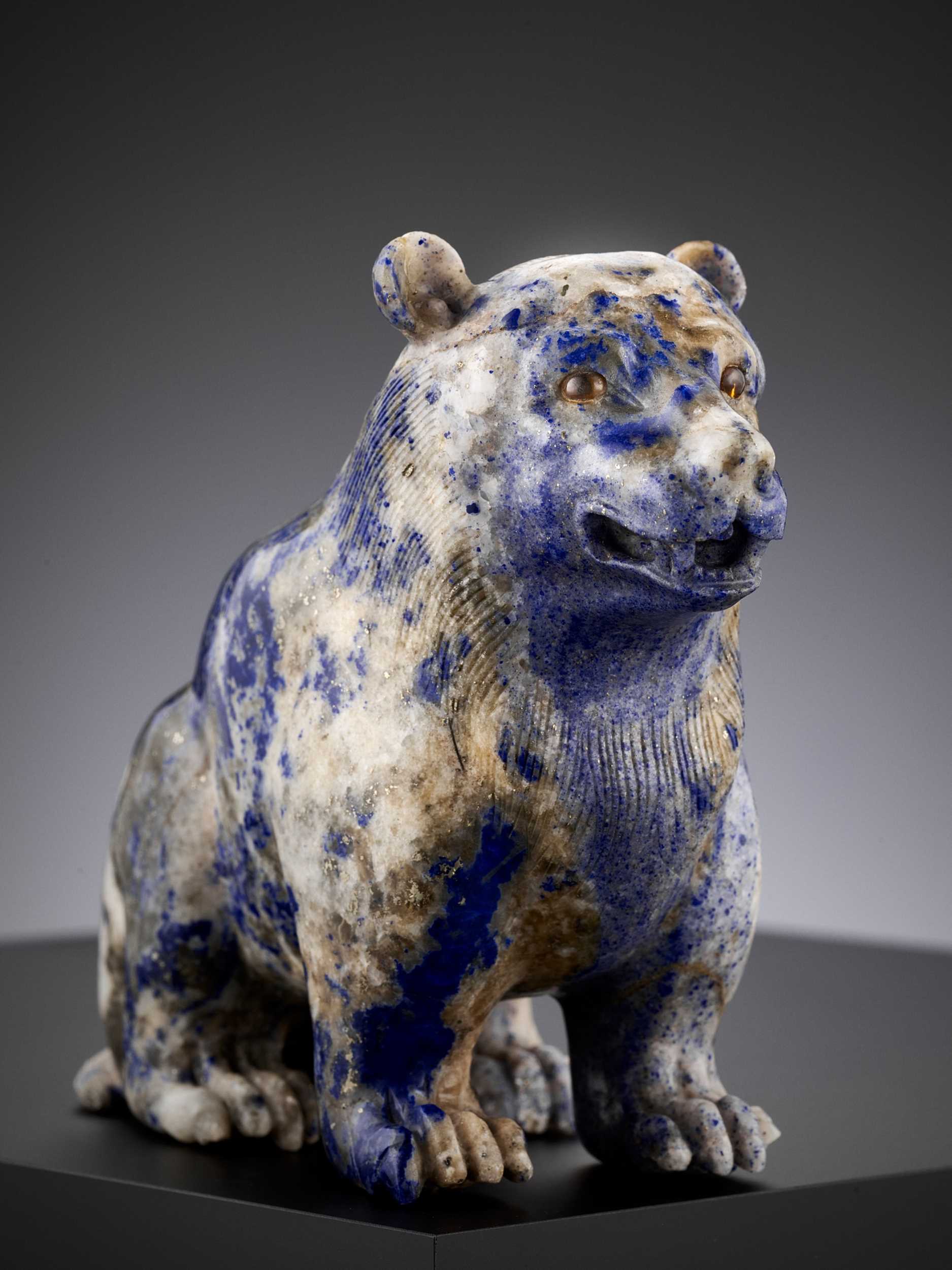
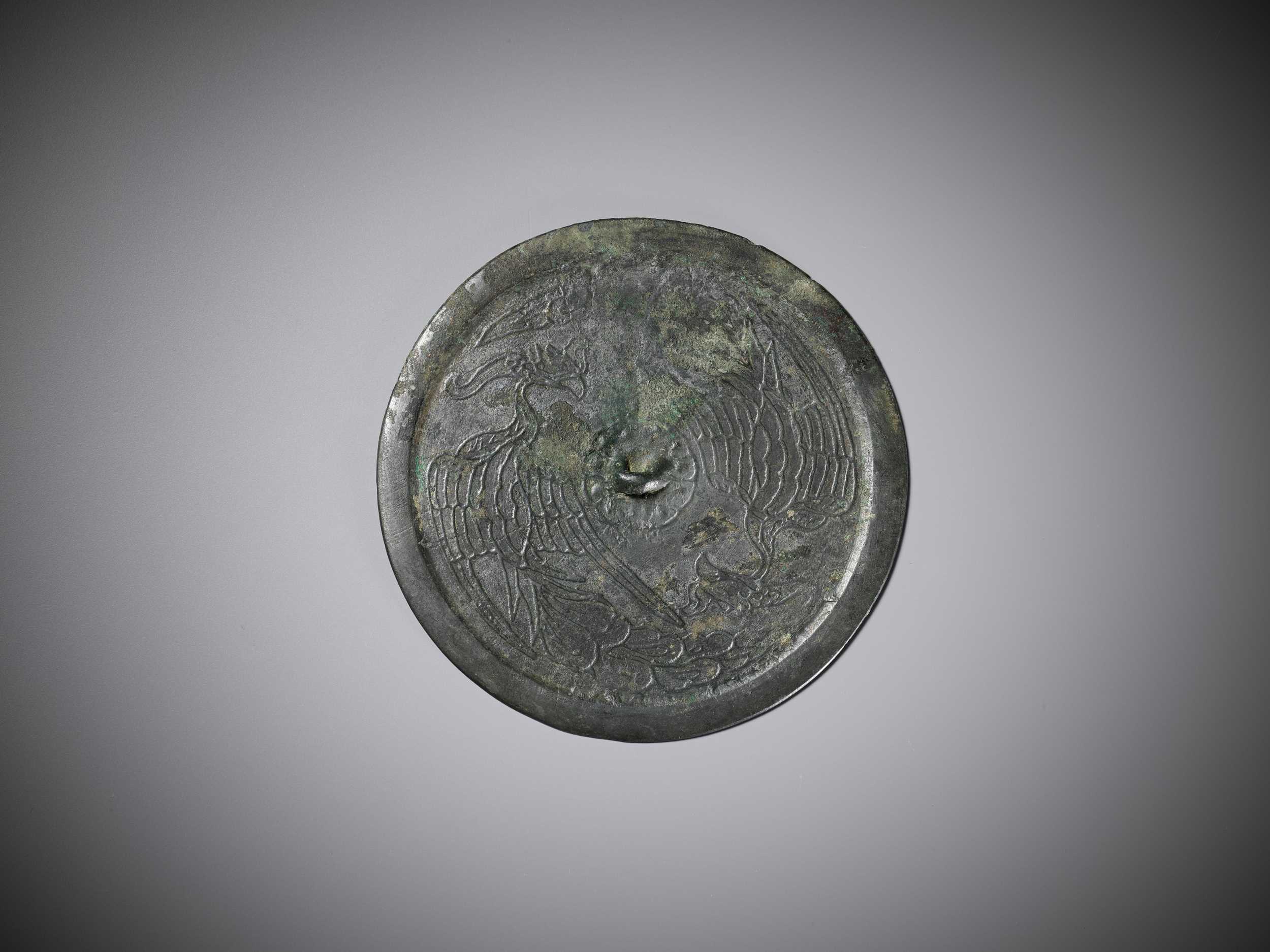
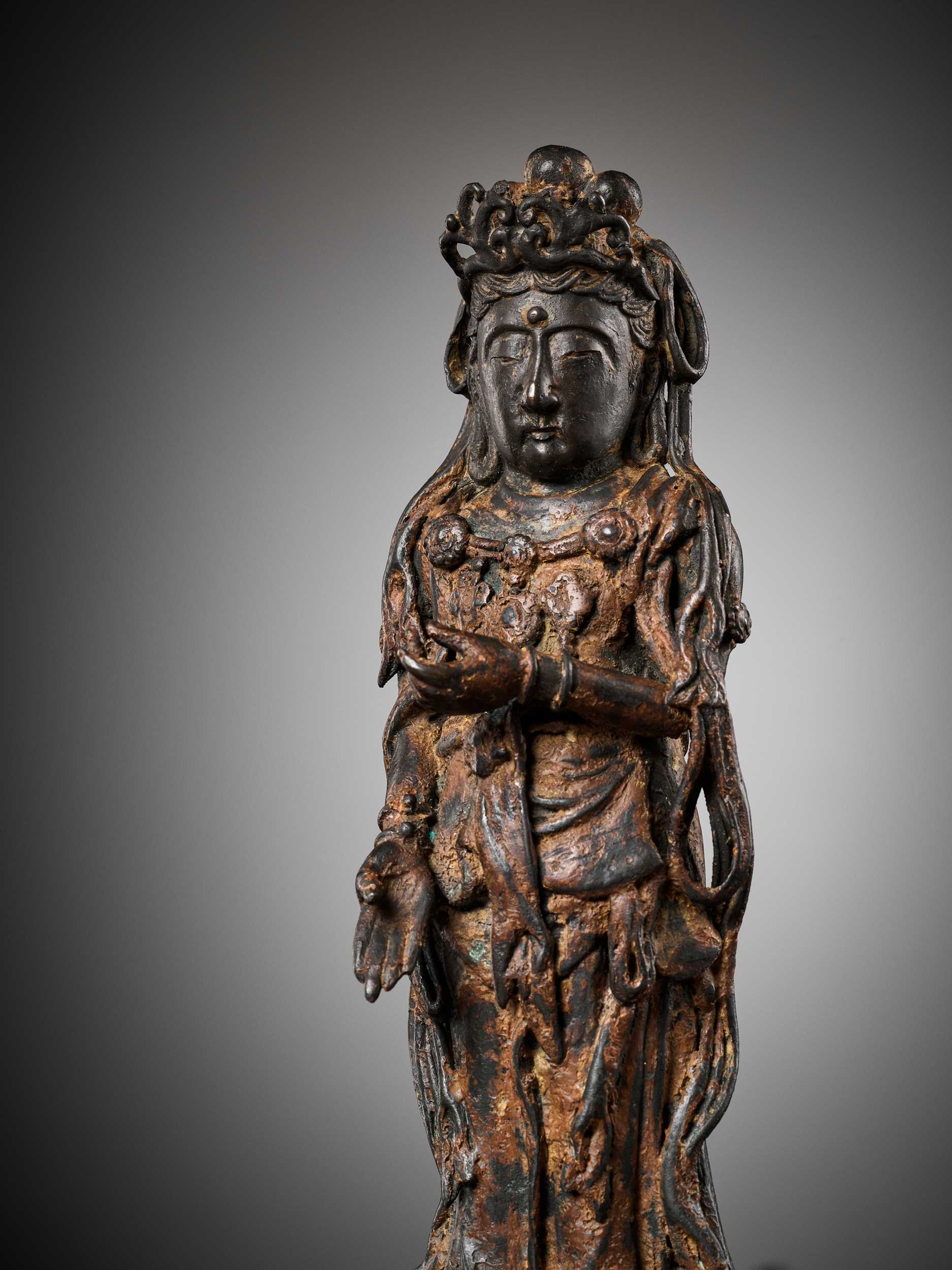
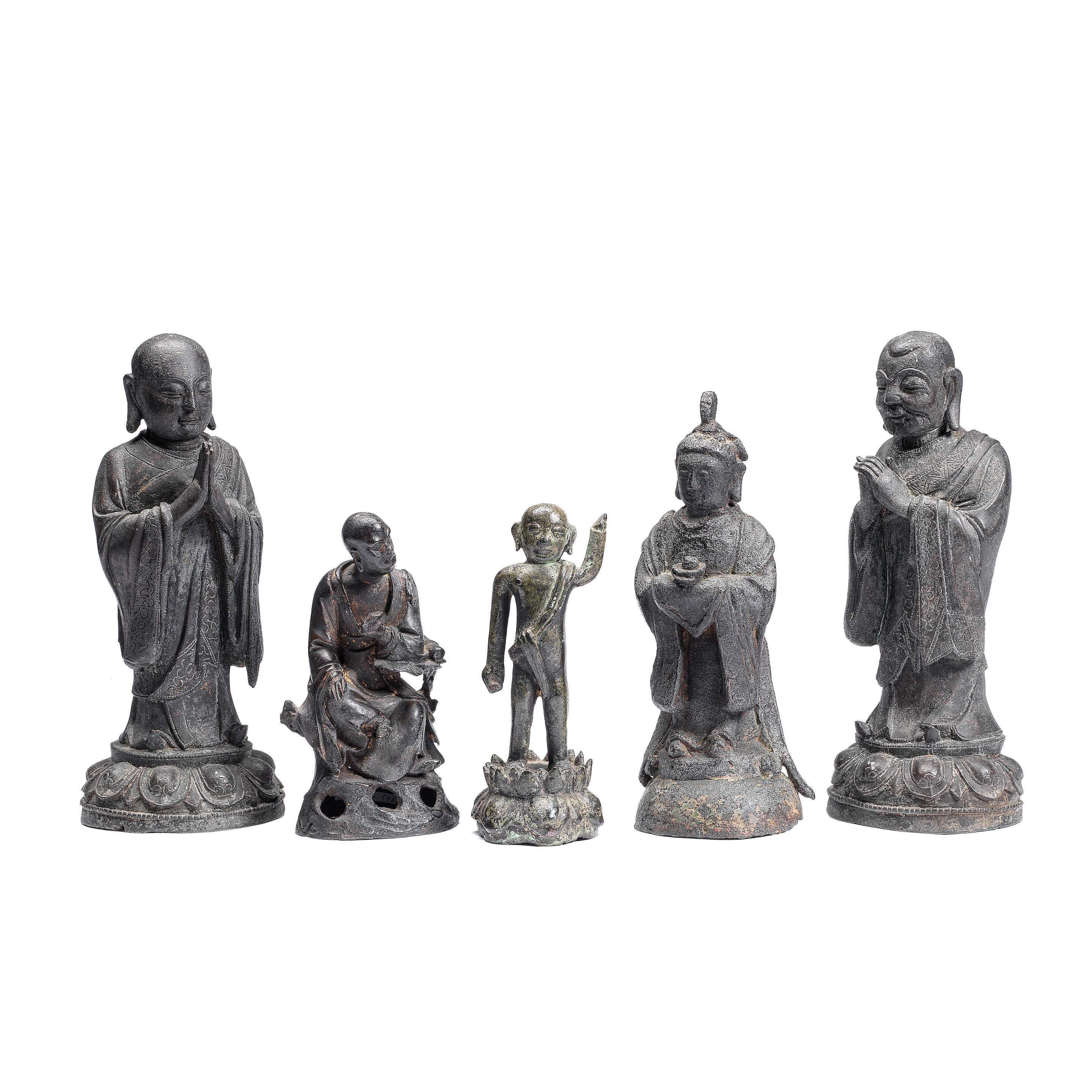
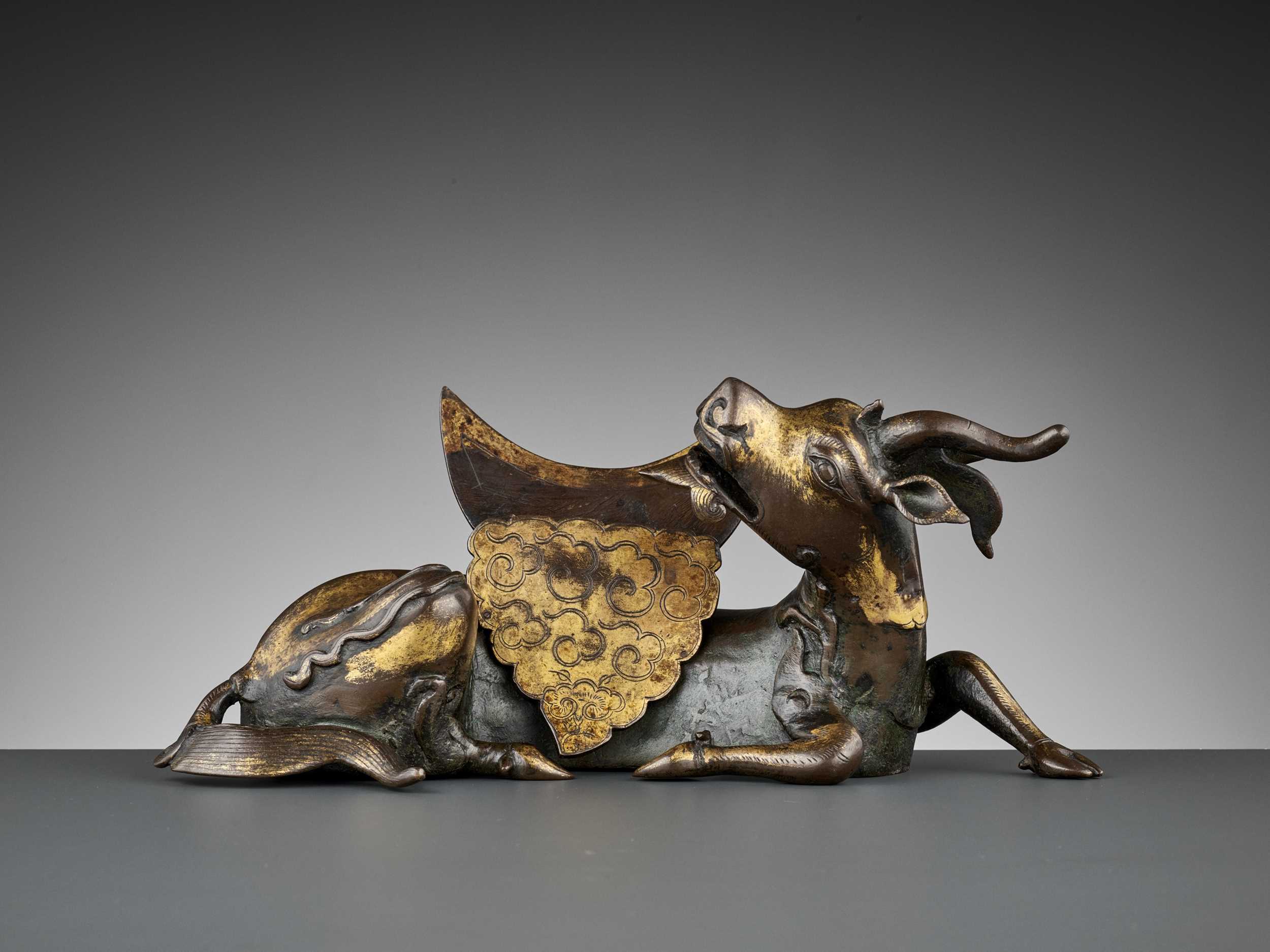
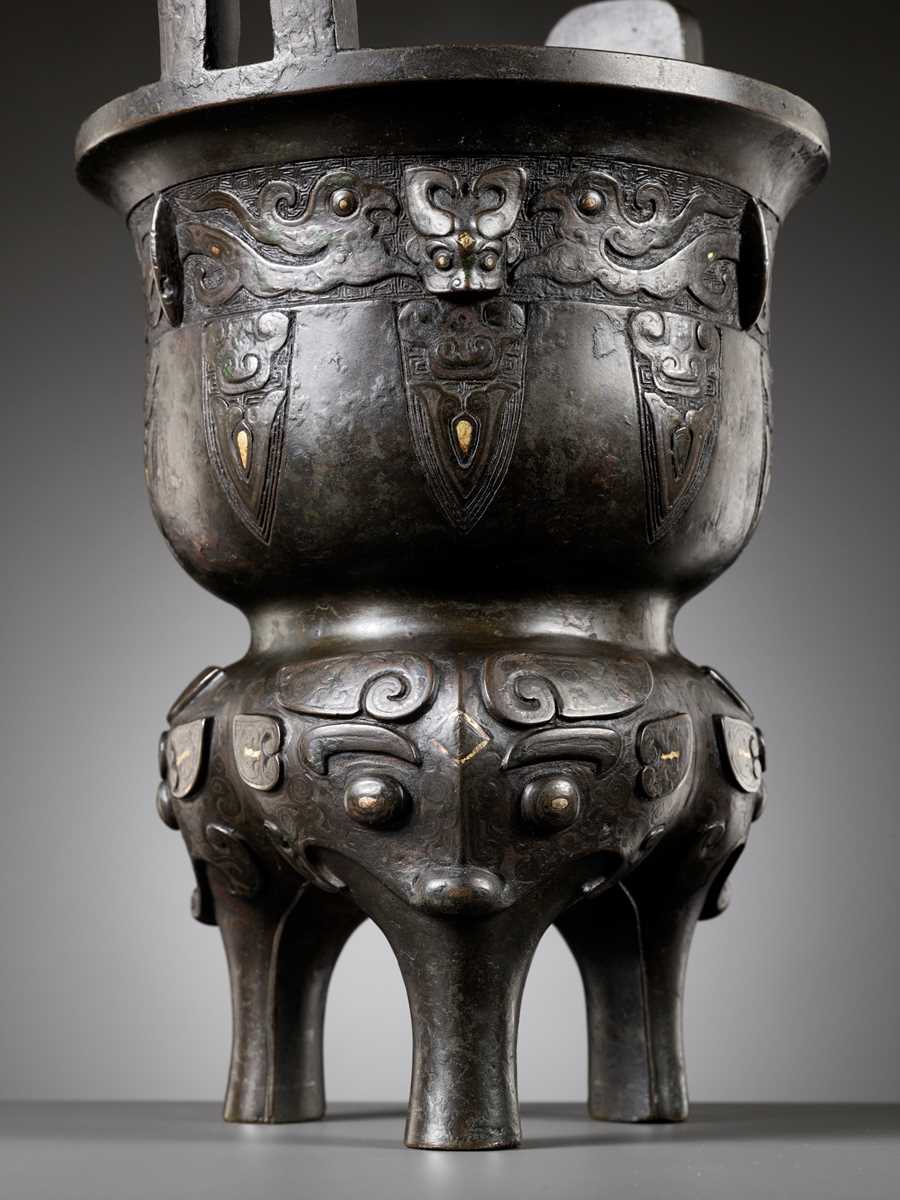
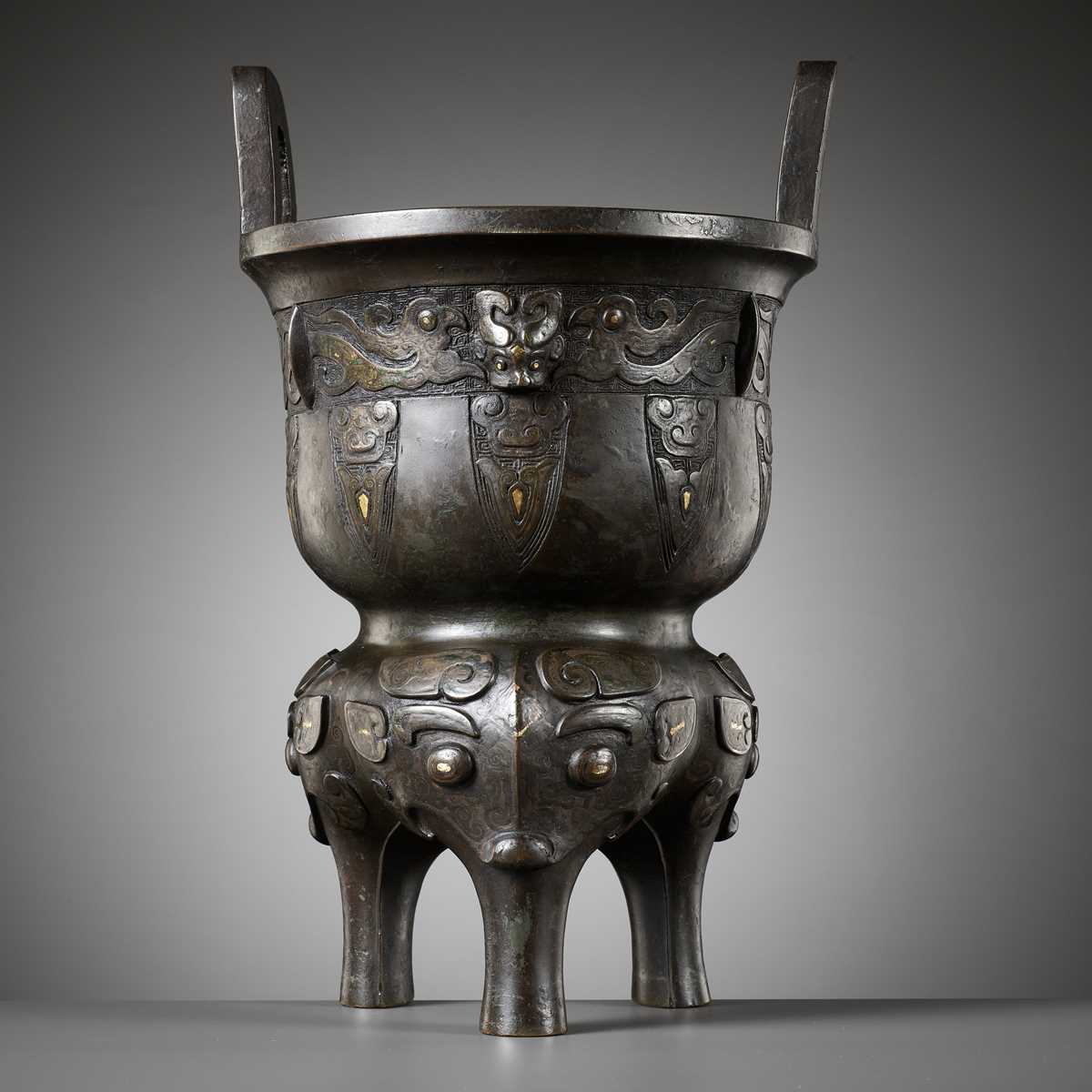
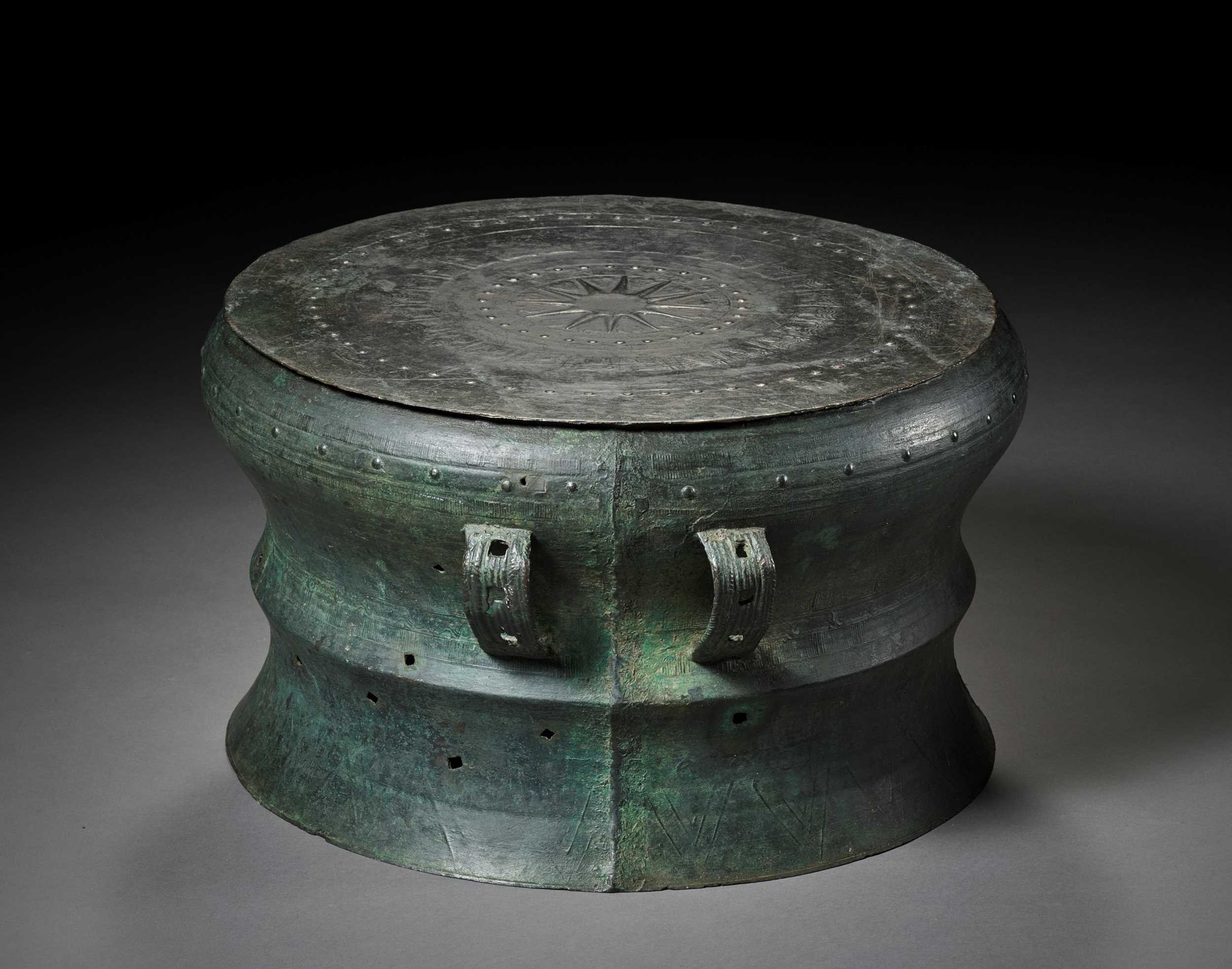

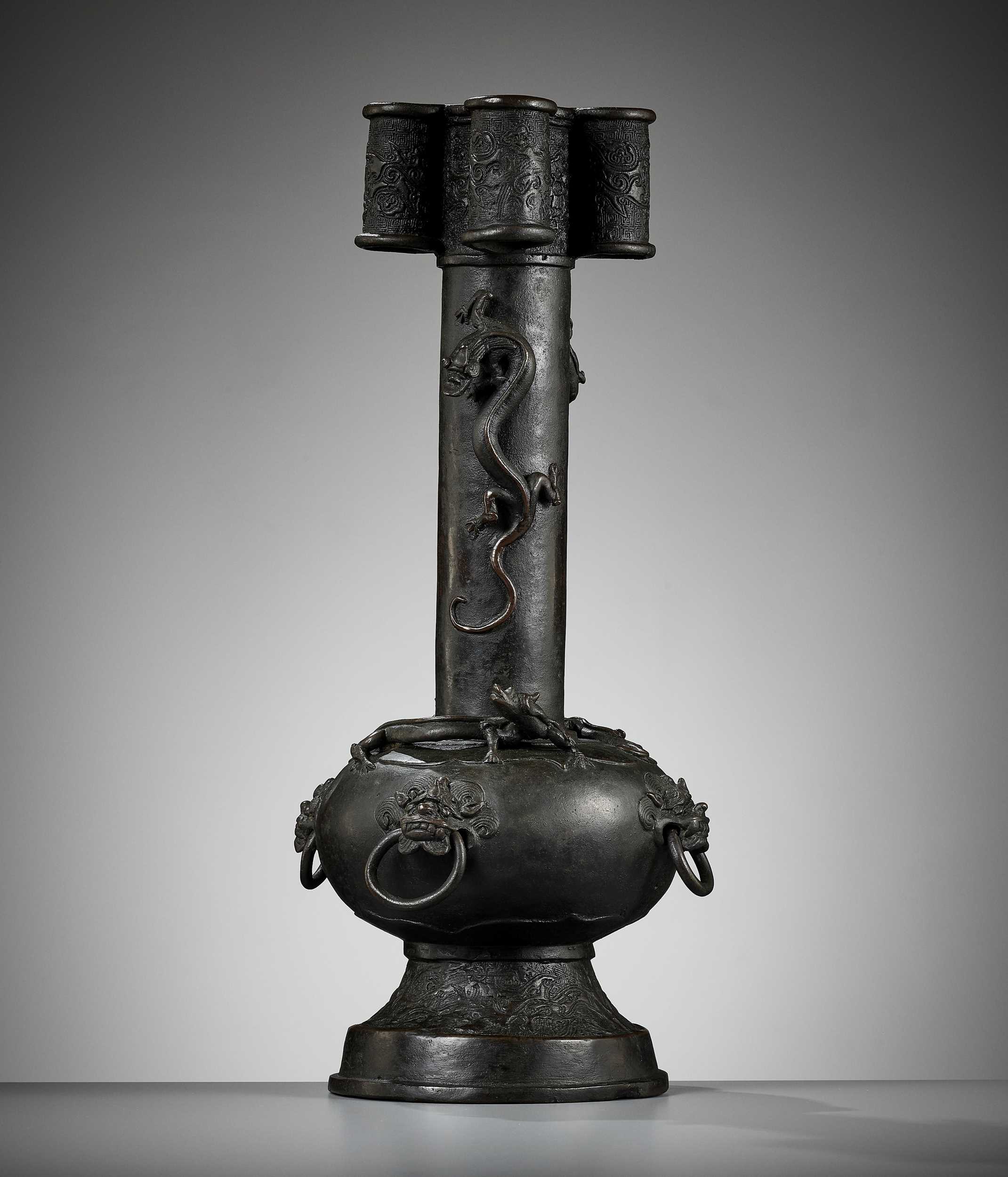
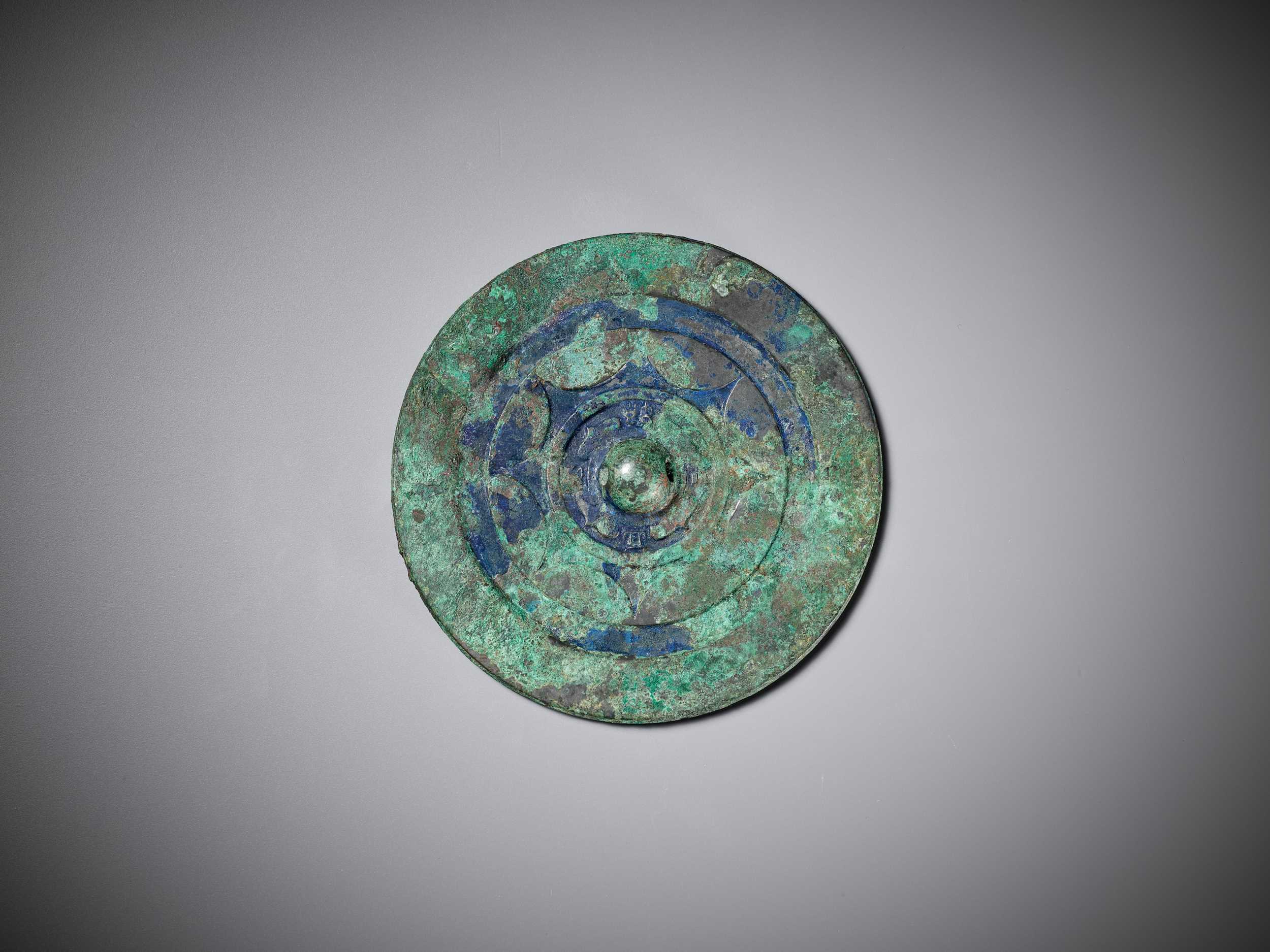
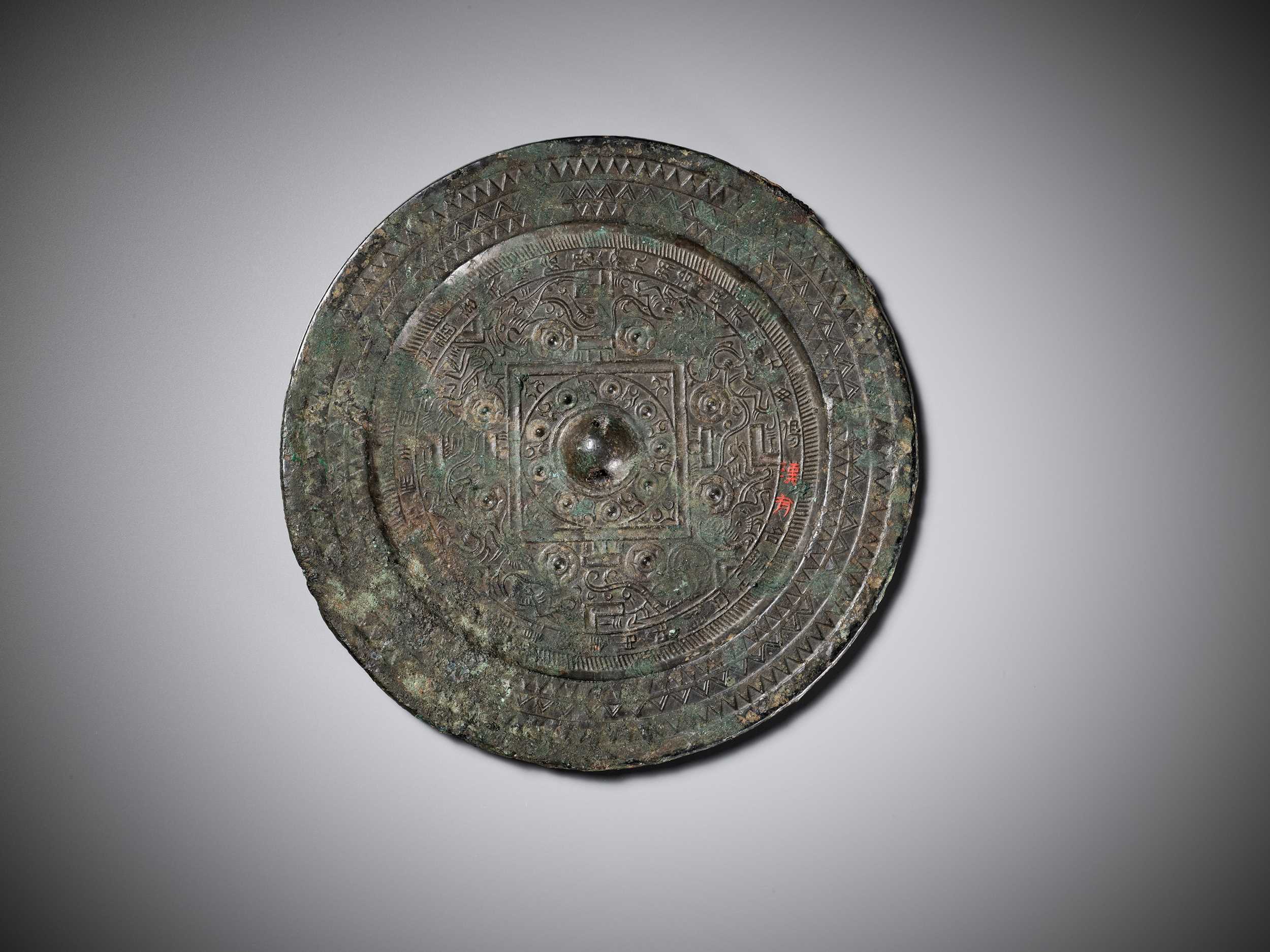
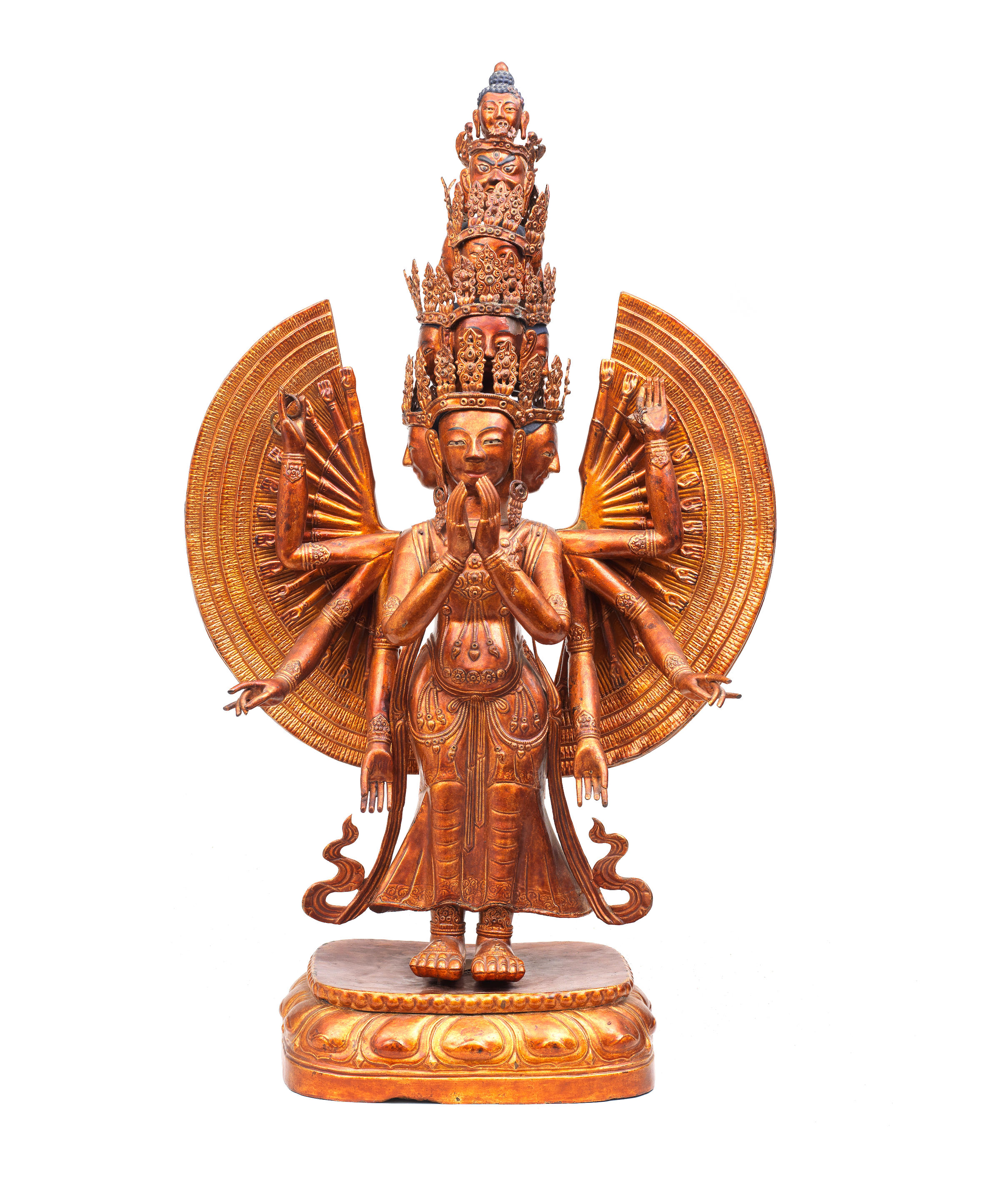
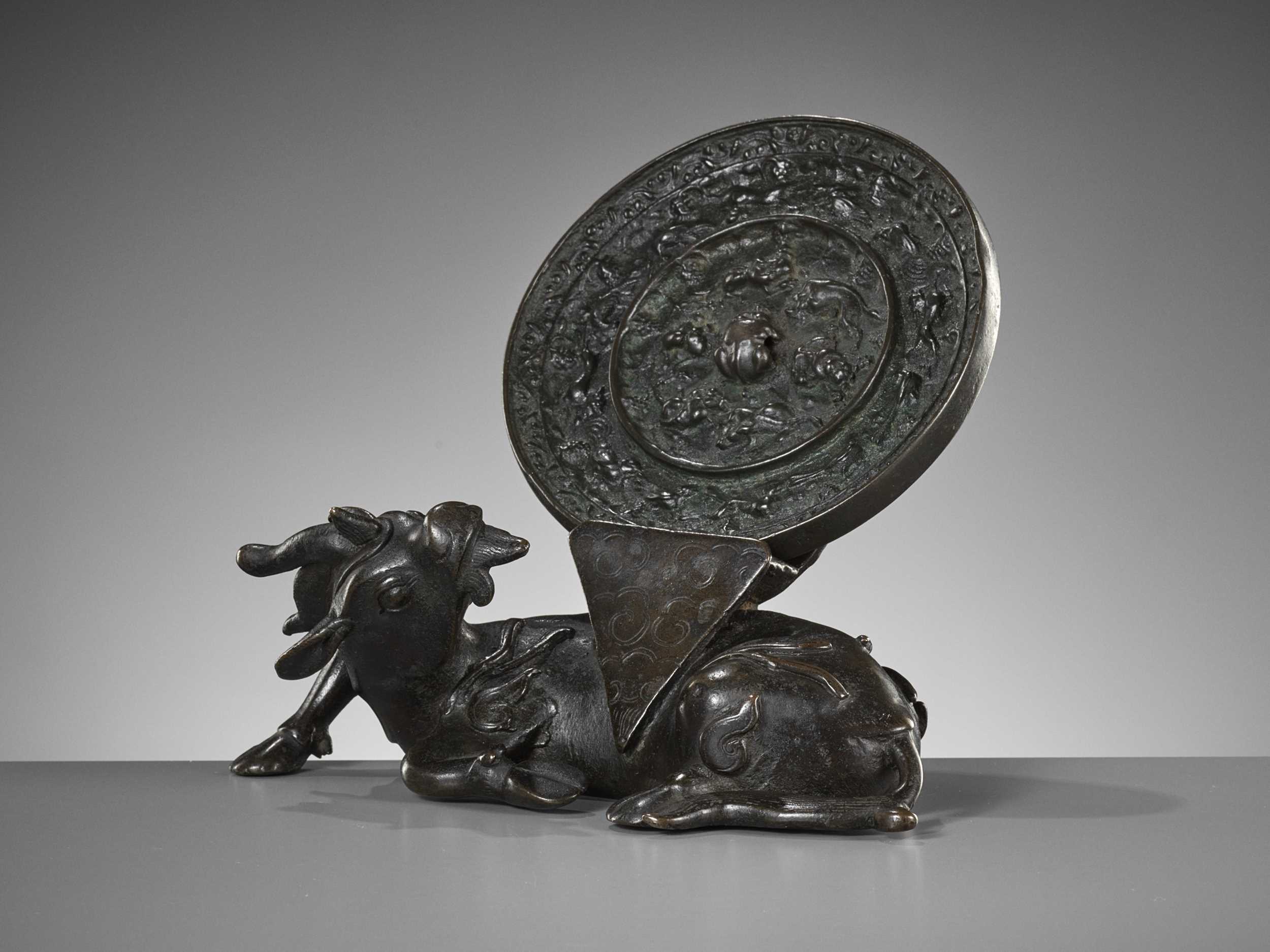
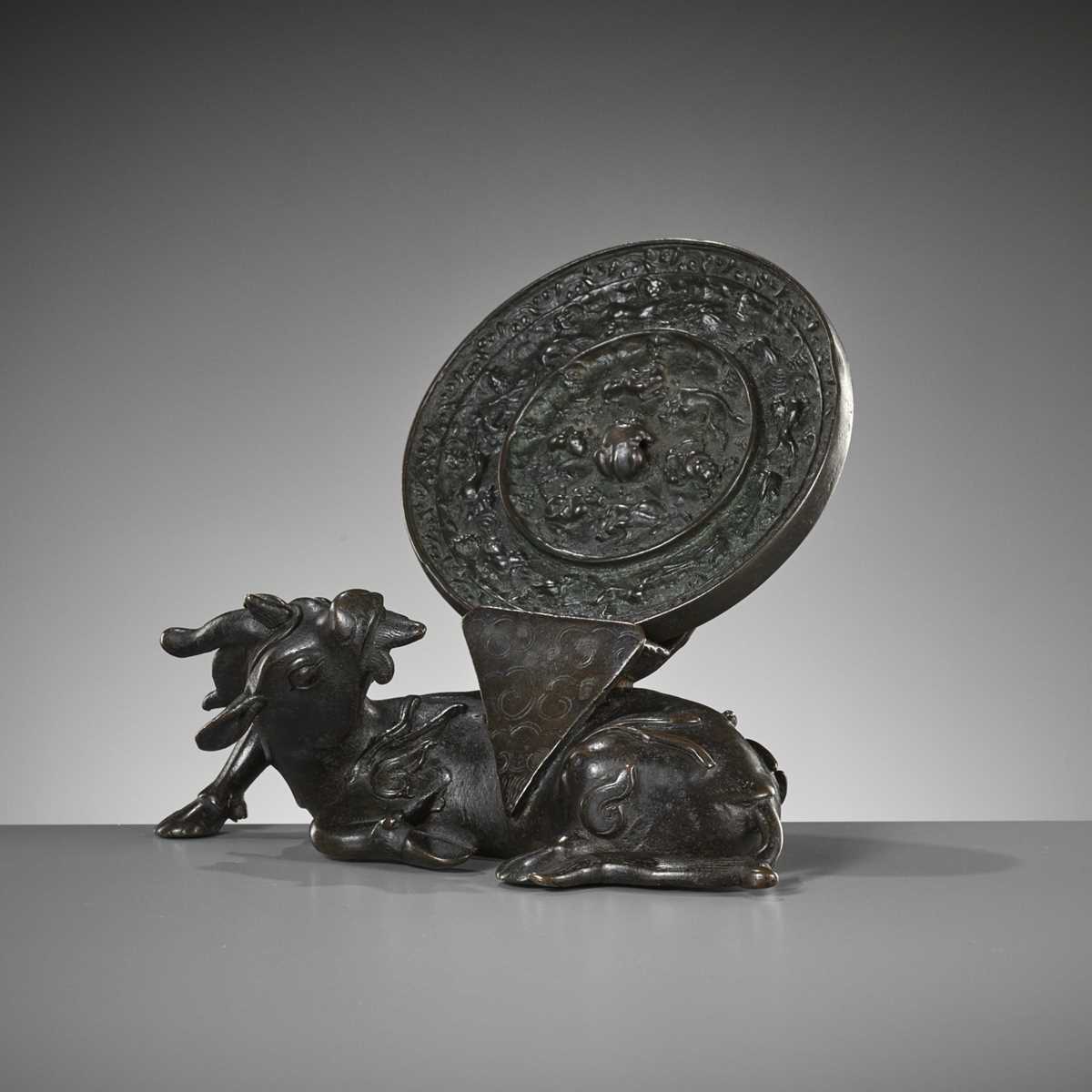
Testen Sie LotSearch und seine Premium-Features 7 Tage - ohne Kosten!
Lassen Sie sich automatisch über neue Objekte in kommenden Auktionen benachrichtigen.
Suchauftrag anlegen